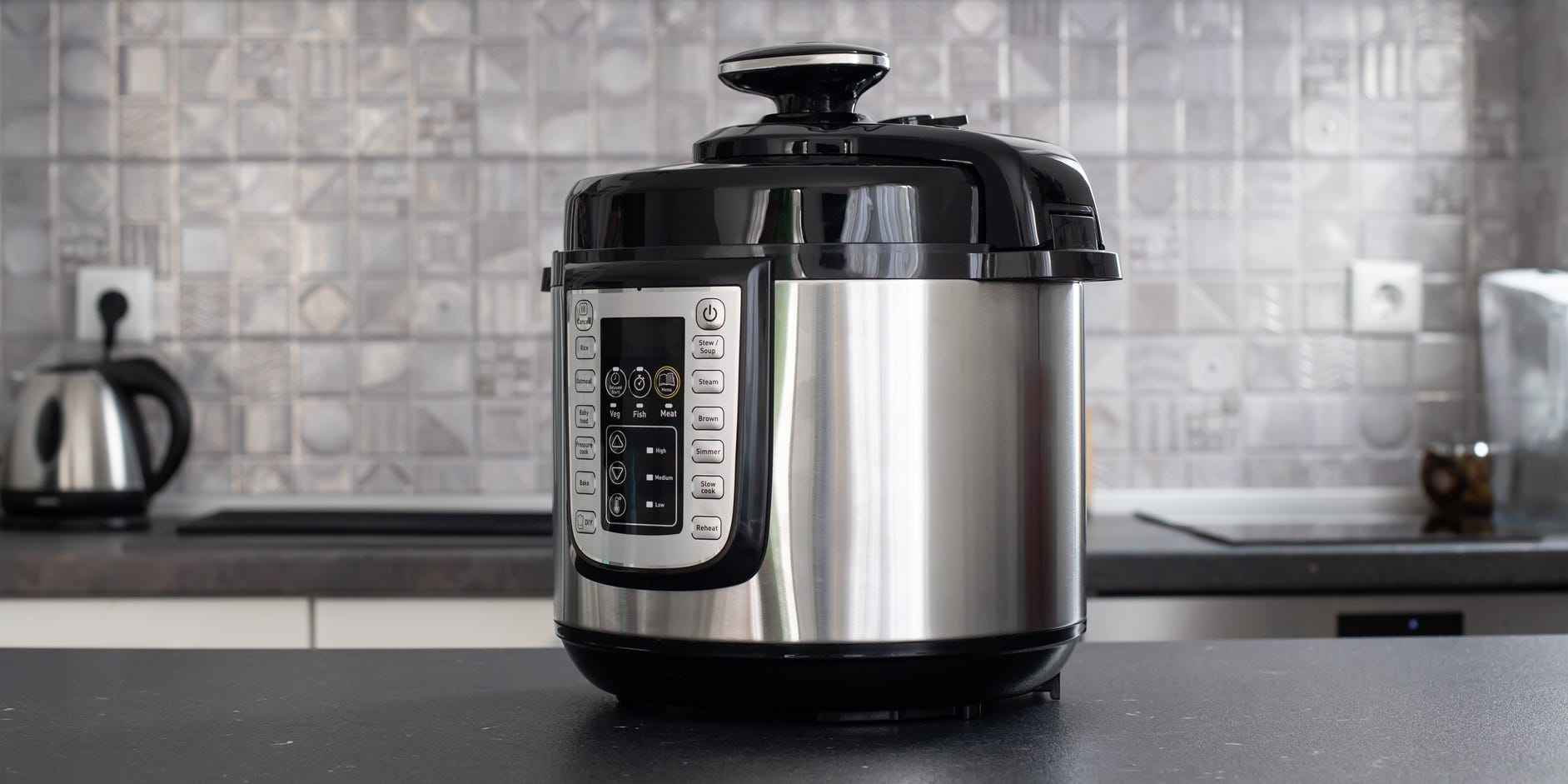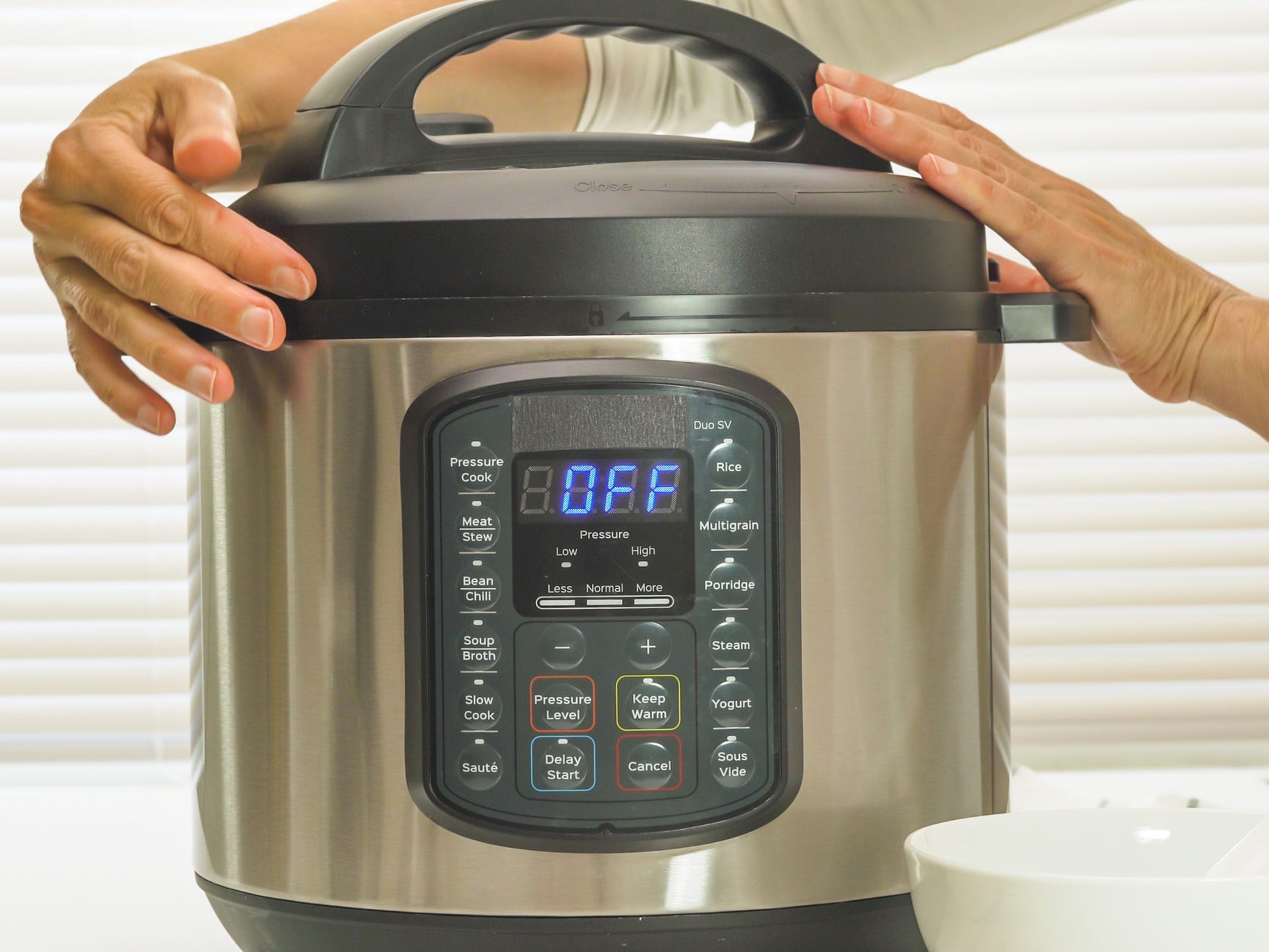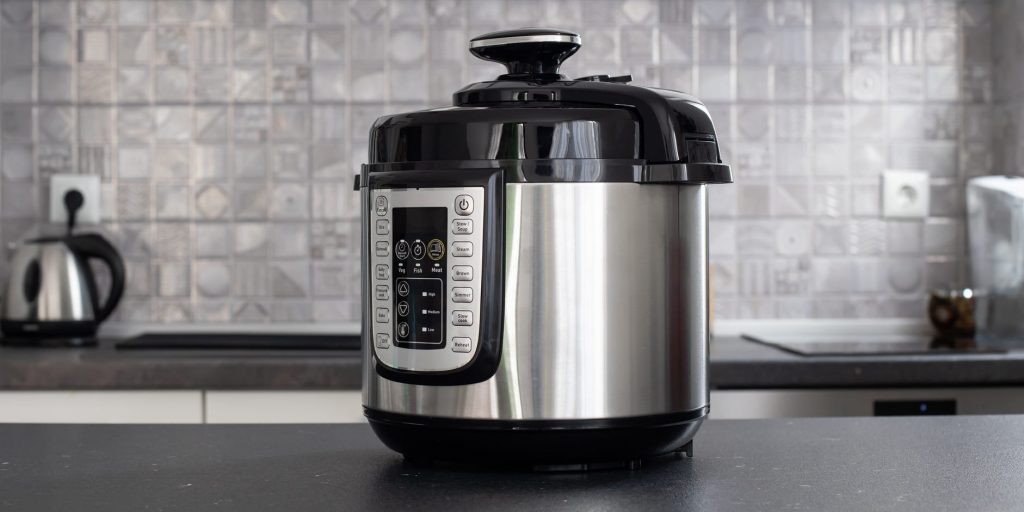
MihailDechev/Getty Images
- Natural release and quick release refer to two different methods of depressurizing an Instant Pot after cooking.
- The natural release function means letting the pressure inside the pot come down gradually on its own.
- The opposite of natural release is quick release, which is performed by opening the steam release valve to depressurize the pot more quickly.
- Visit Insider's Home & Kitchen Reference library for more stories.
While Instant Pots are beloved for their hands-off, quick cooking, there is a small learning curve for those new to the gadget. One word you'll see again and again in Instant Pot recipes is "release." This step, which comes after the cook time is over, is unique to pressure cookers and an important one. There are two options – natural release and quick (or manual) release – and which one you use can greatly impact your dish.
What is a natural release and quick release?
To understand the best release method to choose on an Instant Pot, it helps to have a base understanding of how the electric pressure cooker works.
When an Instant Pot is in pressure cooker mode, it traps the steam generated by the food and liquid inside the pot. As steam builds, pressure increases, which in turn raises the boiling point of water. This allows you to cook food faster.
After every cooking cycle, and before you can safely open the Instant Pot, the pressure must be released from the pot – no matter what kind of release you use.
Instant Pots automatically regulate the pressure for you, with a release valve in the lid to allow steam to escape. Every multi-cooker on the market, including Instant Pots, have valves that allow you to control what type of released is used. Good Instant Pot recipes factor all of this in, resulting in a perfectly cooked dish.
There are two ways to release pressure in an Instant Pot:
- Natural release: "The safest and most useful is a natural release," explains pressure cooking instructor Sara Bir. To perform a natural release, simply let the Instant Pot sit until the pressure naturally releases and goes back to normal. It's the most common release used in Instant Pot recipes and can take as little as five minutes and as much as 30 minutes.
- Quick release: "Also known as manual or steam release, a quick release is when you open a valve on the top of the cooker to let the steam out in a thin, controlled stream," says Bir. This release is more common for delicate foods that you want to avoid over-cooking, and can take anywhere from a minute to five minutes.
When and how to use a natural release

Andrey Znamenskyi/Getty Images
Because there is so much pressure built up inside the pot, releasing it gradually is gentler than a quick release, but it also adds time. This makes it ideal for foods with longer cook times, like braises, stews, and broths.
It's also best to use natural release when cooking foods like oatmeal, polenta, and other porridge-like dishes that "would otherwise sputter goop out of a quick release valve, making a mess and potentially clogging the valve," says Bir.
"Think of natural release not as a time when cooking stops, but when it continues in a more gentle fashion than when it's under pressure," says Bir. While the heating element shuts off, the food continues to cook at a slower pace until finally the pressure is released.
If a recipe calls for a natural release, you don't have to do anything. It's more of an inaction than action. Once the cook time counts down and the pot beeps indicating time is up, leave it alone. You'll know that the pressure has released once the float valve pops down into the lid, making a clicking sound. The pot will then unlock and you can open the lid.
When and how to use a quick release
"Use a quick release when you want to get into the cooker fast," says Bir.
Rather than letting your food sit in the cooker as the pressure slowly releases, a quick (or manual) release calls for action. The valve is opened manually and all of the pent-up steam comes rushing out. "Manual is handy when you have quick-cooking foods, like tender greens or seafood, that would become overcooked with the slower process of a natural release," says Bir.
Some quick, one-pot meals also call for quick releases as well as pasta dishes. Pay close attention to what a recipe calls for, since using the wrong release can not only ruin a dish, but also make a serious mess in your kitchen. If the pot is very full or the dish inside has foamed up, the valve will not only release steam but sputters of hot liquid.
To use the quick release function, turn the steam handle release knob or press the steam release button on the Instant Pot lid. If your valve and steam release are all one mechanism, Bir recommends using a long-handled spoon to push the valve from sealing to open as an extra safety measure against steam burns. Once all of the pressure has released, the float valve will descend and the lid will unlock.
Tips for releasing your Instant Pot's pressure

Nature, food, landscape, travel/Getty Images
- The Instant Pot has a lid that locks automatically when pressure is built up inside, so you can't open it by accident. This avoids any unfortunate mishaps, making the pressure cooker especially safe. Once the pressure has released, the lid will automatically unlock.
- Repeated steam exposure to your kitchen cabinets can strip away paint or warp wood. When releasing steam, be sure to position the valve away from your cabinets.
- Some recipes call for a natural release for a few minutes followed by a quick release. This is often to allow a dish to cool slightly before releasing the pressure so that it doesn't splatter hot liquid from the valve.
- Instant Pot recipes vary widely on how they calculate cook times. Some include pressure release time in their estimates, others include both pressure build and release, while others don't include either. Factor this in when estimating how long a recipe will take.
- "Some Instant Pot models take longer to come down from pressure (whether it's quick or natural release) than others," says Bir. For example, the Ultra is known for an extra long natural release.
- If you've waited half an hour for the pressure to release, chances are you can safely perform a quick release to let any remaining steam escape without greatly impacting the dish.
- Inspect your release valve periodically to make sure it isn't clogged. It's a good idea to clean it every few weeks to make sure it works properly.
Insider's takeaway
There are two main options when releasing the steam from an Instant Pot: natural release and quick (or manual) release. Natural release is more common, and doesn't require any action on your part - simply let the pressure release on its own. A quick release is used for quick-cooking foods and is done by opening the steam release valve. Use caution when using a quick release.
Dit artikel is oorspronkelijk verschenen op z24.nl
